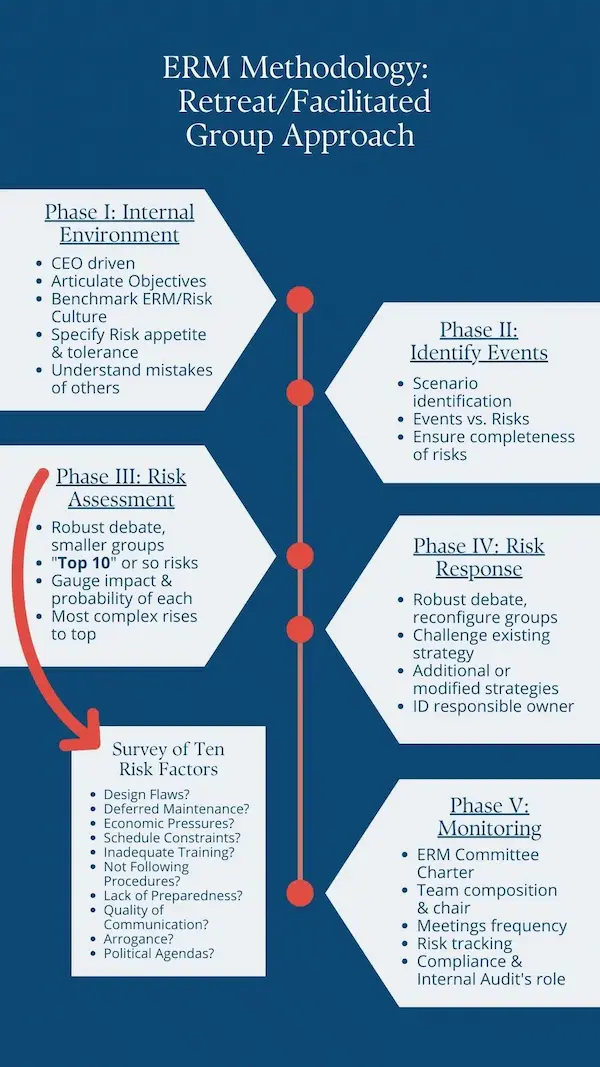John skillfully and patiently led our leadership team through the ERM process, despite initial skepticism among several members of the executive team. The leadership team found the process very helpful in focusing on the issues that truly matter. Our Board found John’s process extremely valuable in aligning our role and vision with management’s plan and execution.
Helping organizations to reduce uncertainty and safeguard strategic goals through ERM consulting services. Expertise across a variety of business sectors related to finance, technology, compliance, and operations.









